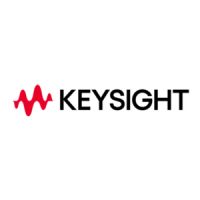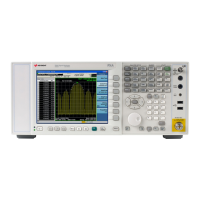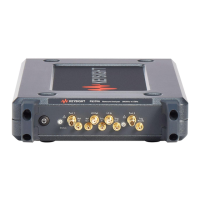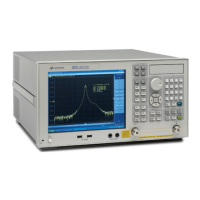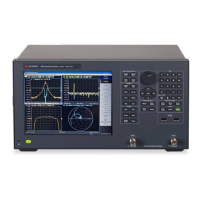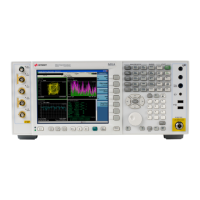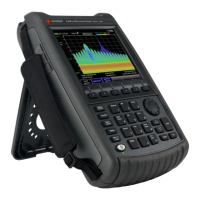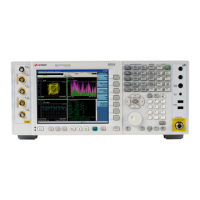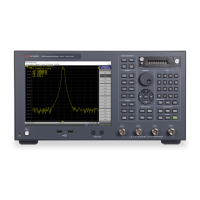Determining measurement speed
Table 1 shows the measurement speed (for data taking only) of the analyzer. The actual
measurement speed also includes frequency stepping time, settling time, bandcrossing
time, retrace time and handshake time (if two PNAs are used). If external sources are
used, the measurement speed is often determined by the remote source which is usually
the slowest resource in the system. All measurement times in this section are nominal
values.
1. Measure the speed
Calculating the measurement speed of your antenna test system is not straightforward.
Two methods can be used to determine the speed of the PNA, either measure it directly
or use the following equation to calculate the approximate speed.
To measure the speed, either use a program to time when the PNA completes the
measurement, or use an oscilloscope and monitor the “ready for trigger” line out the
rear panel BNC labeled I/O 2 (Trig Out). Put the PNA in external trigger mode, set it to
the default of “hi level” trigger (If there is no trigger in, you do not have to enable Trigger
Out). A pull up on the “trig in” line will cause the PNA to run at max speed. The total
measurement time is the spacing between “trig outs”.
2. Calculate the speed
To calculate the approximate measurement speed use the following equation:
Total Measurement time = data taking + pre-sweep time + band crossing + retrace
Data taking: Measurement time per point is determined by the larger of 1/BW or the
maximum sweep rate. For wide spans with fewer points, sweep rate is more likely to
dominate. Sweep rate is approximately 600 MHz/ms for the PNA and approximately 900
MHz/ms for the PNA-L.
Pre-sweep time: In swept mode, pre-sweep time is 222 uS for the PNA and 56 uS for
the PNA-L. In step mode, calculate the sweep time from the following information: PNA
fastest step speed at 1 Hz/pt, max IF BW is 170 us, and at 10 MHz/pt, max IF BW is 278
us; PNA-L fastest step speed at 1 Hz/pt, max IF BW is 80 us, and at 10 MHz/pt, max IF
BW is 160 us.
Band crossings take on the order of 4 – 8 ms per crossing for the PNA and 2 ms for the
PNA-L. However, the number of band crosses increases when in frequency offset mode.
In that mode, band crossings of source and receiver may not coincide. Exact band cross-
ing locations can be found in the Microwave PNA Service Manual on Table 5.2.
Retrace takes 10-15 mSec with the display on, or 5-8 mSec with the display off. Retrace
will take the system back to the start frequency of the previous sweep.
Upgrade note: In general, the PNA will
provide signicant speed improvements over
the 8510 or 8530 analyzers. However, some
measurement setups will require additional
external component speed improvements in
order to fully capture the PNA speed benets.
34 | Keysight | Antenna Test – Selection Guide
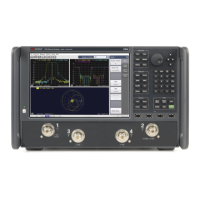
